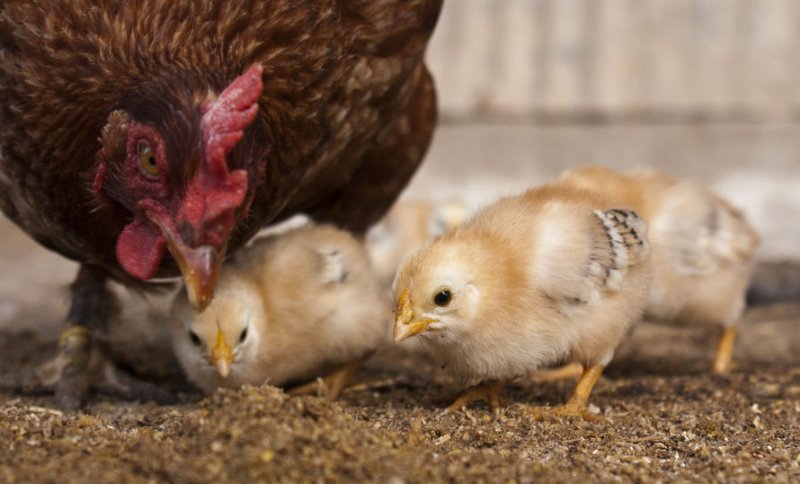
Listening to baby chicks calls could help identify welfare problems at an early stage, scientists say, in what could be a boost to precision livestock farming techniques.
A team of British animal welfare and behaviour researchers collected acoustic recordings in 12 typical flocks of 25,000 chicks as part of a new study.
Scientists demonstrated that these calls could be clearly picked up above other noises such as regular calling and farm machinery.
In nature, chicks attract the attention of the hen with a loud and distinctive distress call when uncomfortable or uncertain of their surroundings.
However, in commercial chicken farming, thousands of newly-hatched chicks are reared in batches.
Where previous research has linked distress calling to stress and anxiety-like states in chicks, the new study, published in the Journal of the Royal Society Interface, also shows it could predict flock-level behaviour, future growth and mortality rate.
This suggests distress calling may be an ‘iceberg indicator’ – a single measure that captures a range of welfare information at once.
Vicky Sandilands, a senior welfare scientist at Scotland's Rural College (SRUC) said the study was an 'important contribution' to precision livestock farming techniques.
“This work shows the potential to use acoustic data from chickens to identify welfare problems which can then be tackled by farm staff."
The method used in the research involved measuring the ‘spectral entropy’ of the soundscape – a value that describes how sound can vary from a clear, tonal note up to white noise.
As increasing numbers of chicks call in unison, the usual background noise of the farm becomes overall more tonal, scientists said.
This computationally simple way of counting distress calls could act as an early-warning signal to farm staff that chicks require attention and ultimately improve chick welfare across their lifetimes.
The findings support previous studies on the benefits of automated monitoring of livestock for real-time warnings of emerging welfare concerns.
They also emphasise the importance of using animal-centred behavioural and emotional welfare indicators alongside traditional environment and productivity monitoring on poultry farms, to improve conditions from the birds’ own perspective.
The study was undertaken by the University of Plymouth, University of Roehampton, SRUC and Newcastle University.
